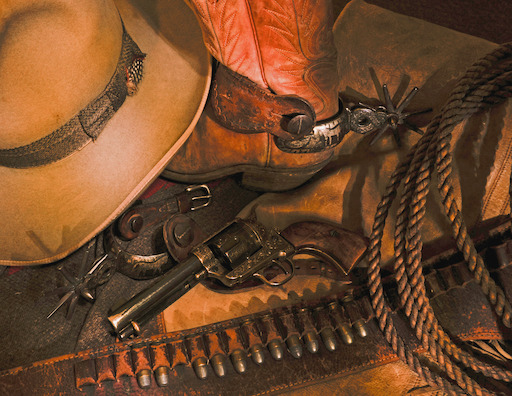EDITOR’S NOTE: Christmas is a time of commonality for many Americans as they join in celebrating the season of joy and merriment. This month, 828newsNOW will reveal the history of this sacred holiday and how the American mindset has influenced its development over the centuries.
___
By the end of the American Civil War, a growing number of cowboys and outlaws began to reign the plains and deserts of the American West. The short era of fortune seekers and vagabonds came to be known as the Wild West, a period only lasting from around 1865-1885.
Pioneers on the American frontier celebrated Christmas in many of the same ways as we do now. While we may think of the Wild West as archaic, in actuality it occurred relatively recently, coinciding with the lives of Queen Victoria, Charles Dickens, Charles Darwin and Karl Marx. Wyatt Earp, the U.S. Marshal who fought at the O.K. Corral in Tombstone, Arizona, lived until 1929, long enough to appear in a movie.
In the middle of the Wild West period, Christmas was established as a national holiday by Congress. President Grant signed a bill in 1870 that recognized four holidays for federal workers: New Year’s Day, Independence Day, Thanksgiving, and Christmas. This proclamation was largely unimportant in the West where apart from the county marshal, judge and postman, few had government jobs that would give them the day off. Most people had to work on Christmas.
Even without the day off, most settlers celebrated in one way or another.
Decorations in the home had gained immense popularity during the post-war era. In keeping with Victorian norms, houses were cluttered with all manner of greenery taken from the outdoors, whether it was garlands of evergreen or pinecones carefully arranged.
Mistletoe was also common with couples finding themselves underneath it more often than could be choked up to mere coincidence. Intriguingly, due to its supposed aphrodisiac qualities, kissing under mistletoe may date back as far as Celtic Druids at the time Jesus lived, predating the holiday it is most closely associated with today.
With Christmas trees gaining popularity in the previous decades, some towns in the American West, if they had the means, kept the tradition. Common decorations of the period included paper ornaments, yarn or ribbon strung with care and fruits like apples and berries hanging around. Candles began appearing on trees in America around this period too, leading to the Christmas lights we know and love today.
Curved peppermint sticks began to be hung on Christmas trees in the late 1800s. While their red stripe was a few years from being added, the candy cane quickly caught on as both a tasty treat and an ornament.
While uncommon today, the yule log was a widespread tradition then. To make hunting for firewood in the cold weather more palatable, families would search for a large log, usually one that would burn all through the night of Christmas Eve into the following morning. The yule log was thought to bring good luck to the household.
In the era of company towns, if workers even had a family, which many did not, most had little to offer their wives and children. Those who had families, despite their meager conditions, strived to bring a smile to the faces of their boys and girls with gifts of some variety, often handmade toys made of corn husks and carved wood.
Unlike most families today, presents were opened on Christmas Eve, not Christmas Day.
For those with a comfortable standard of living, gifts were slightly more lavished, although humble in comparison to the expectations of today. Gifts were almost exclusively small items that could be easily shipped in large quantities on the train. Ordinary gifts included candy, pocketknives and harmonicas.
Frontier families sang many of the same Christmas songs we sing today like “Silent Night,” “Hark the Harold Angles Sing” and “Joy to the World.” While hymns were more common, secular carols like “Up on the Housetop” and “Deck the Halls” were added to Christmas songbooks, which had become commonly sold items by this point.
Having been penned a few decades prior, “The Night Before Christmas” was often read to children during the Advent season. The persistence of this poem to the present displays how little has changed in the idealistic depiction of the holiday. In the subsequent 200 years, St. Nicholas is still known to fly around the world in his reindeer chariot to deliver presents to all the good children.
Foods served at Christmas feasts included an assortment of sweets like plum pudding, fruits, gingerbread, cakes, meringues and raisins. As for savory dishes, potatoes, vegetables and nuts were offered as well as ham or bacon and, for some wealthy people, grizzly bear meat. Liquor was often served, predominantly whiskey. For those living in larger cities, eating out might have been an option. Churches also hosted Christmas Day feasts, not unlike potlucks today.
Some of the Indian tribes in the West were known to celebrate Christmas such as the Lakota and Navajo. In the Rocky Mountains, some Natives would hold a feast called “The Big Eating” according to Grunge. Settlers were known to borrow some Christmas recipes from their native neighbors including fry bread.
For more Christmas history, check out these articles:


